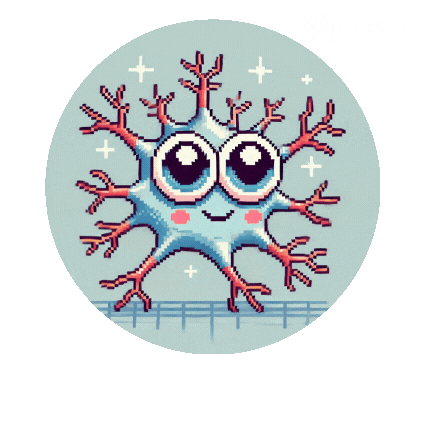April 2025

Ultra-Sensitive Cell Constructs: The New Frontier of Environmental Control
Written by: Robin Sieg & Prof. Dr. Kathrin Adlkofer
Can a tiny lab-grown heart survive outside the incubator? This provocative question is becoming very real as scientists engineer increasingly complex living cell constructs. Recent breakthroughs in biotechnology now allow us to grow miniature human tissues in the lab. These advances promise revolutionary applications from drug discovery to regenerative medicine. But there’s a catch: the more biologically complex these cell constructs become, the more fragile and demanding they are about their environment. Even minor deviations in temperature or CO₂ levels can jeopardize their survival. In this article, we explore the rapid progress in ultra-sensitive cell constructs and why rising biological complexity demands equally advanced control of cultivation and transport conditions.
Biological Complexity Breeds Fragility
It’s an intriguing paradox of cell biology: as we reconstruct more lifelike tissues in vitro, mimicking the architecture and function of real organs, those tissues become exceptionally delicate. A simple layer of immortalized cells might endure being shuttled between labs on ice, but a 3D organoid or a multi-cell-type microtissue can be irreversibly damaged by a few hours in suboptimal conditions. Why?
With greater complexity comes greater sensitivity. Thick or multi-layered constructs have cells buried far from the surface, relying on carefully maintained oxygen and nutrient gradients. Specialized cells (like neurons or cardiomyocytes) exhibit finely tuned electrophysiology and metabolism that react sharply to stress. Biological “divas” - these fragile constructs will protest (often by dying or losing function) if their environmental demands aren’t met. The following five examples illustrate an ascending scale of sensitivity, from relatively moderate to extreme, and highlight cutting-edge uses that make preserving these cells worth the challenge.
Beating Heart Cells on a Delicate Rhythm
Induced pluripotent stem cell (iPSC)-derived cardiomyocytes are heart muscle cells reprogrammed from stem cells. They can beat in a dish, modeling a patient's heartbeat at the centimeter scale. These cells have made a splash in biomedical research by enabling patient-specific heart disease models and drug safety screening. For example, researchers have used iPSC-derived cardiomyocytes from patients with inherited arrhythmias to test new drugs for heart rhythm disorders¹. In fact, the pharmaceutical industry now routinely evaluates drug cardiotoxicity on iPSC-cardiomyocytes, leveraging their human-like responses to catch dangerous side effects early². This is a huge leap from decades of relying on animal heart cells. Despite their promise, iPSC-cardiomyocytes are surprisingly fragile outside of controlled incubator settings.
They require constant warmth (~37 °C) and a 5% CO₂ atmosphere to maintain pH and electrolyte balance in their media. If the CO₂ level drifts even modestly, the culture medium's pH can swing, and the cells' beating rate and viability can be affected. These cardiomyocytes are also electrically active; temperature fluctuations or mechanical jolts can disrupt their synchronized beating. While they rank as only "moderately" sensitive on our list, anyone who has handled them knows they don't tolerate neglect. When transporting live iPSC-cardiomyocytes between facilities (for instance, from a production site to a testing lab), scientists often face a race against the clock to keep conditions stable². Their delicate rhythm truly depends on an uninterrupted nurturing environment - a foretaste of the even more sensitive constructs to come.
Fragile Cells with Complex Connections
Moving up the sensitivity scale, primary neurons take delicacy to another level. These are neurons isolated directly from brain tissue (often from rodent embryos or human stem cells) and grown in culture. Primary neurons are indispensable for neuroscience: researchers use them to study synaptic connections, neural development, and diseases like Alzheimer's in a dish³. For example, cultured hippocampal neurons are a classic model for learning and memory studies, and cortical neurons are used to screen compounds for neurotoxicity. Unlike immortal cell lines, neurons have no ability to divide or "reset" if conditions turn unfavorable - they are as irreplaceable and sensitive as neurons in the brain. In culture, primary neurons demand impeccable care. They thrive only within a narrow range of conditions: fresh nutrient-rich medium, 36-37 °C temperature, humidified 5% CO₂ for pH balance, and absolutely sterile, calm surroundings.
A slight chill or pH change can trigger stress pathways or even cell death. Indeed, it's common lore in labs that if you leave a neuronal culture on the benchtop too long, you can watch synapses shrivel. These cells are so sensitive that even transient drops in CO₂ (leading to medium alkalinity) or a few-degree temperature dip can impair their electrical firing and network activity. Handling primary neurons feels a bit like caring for a mayfly - their baseline lifespan in vitro is limited (weeks at best), and any environmental misstep can cut it even shorter. It's no surprise researchers hesitate to move neuron cultures at all. Transporting them is a white-knuckle affair: they must be kept in portable incubators or temperature-controlled, CO₂-supplied carriers to avoid catastrophic loss. The fragility of primary neurons underscores how complex cellular functions (like synaptic communication) come with extreme vulnerability³.

Mini-Organs that Mimic Life (and Perish Without Care)
An intestinal organoid grown from stem cells, resembling a miniature gut with crypt-like structures. Organoids can self-organize into complex 3D tissues, but their inner cells can suffer if nutrients and gases aren't carefully provided. Organoids are miniaturized, 3D organs grown in vitro, and they represent one of the most groundbreaking advances in biomedical science of the past decade⁴. Made from stem cells that self-organize into tiny brain, gut, liver, or kidney-like structures, organoids recapitulate many features of real organs - multiple cell types, proper architecture, and some functionality. Scientists have used organoids to model human development and disease with astonishing fidelity. For instance, brain organoids have been used to study how the Zika virus causes microcephaly in developing brains⁵.
In one striking study, researchers grew region-specific brain organoids in spinning bioreactors and showed that Zika infection in a "mini-brain" led to neuron death and smaller organoid size, mirroring the human fetal brain damage seen in Zika-affected pregnancies⁵. Organoids are also making headway in personalized medicine and drug discovery - "mini-organs" have attracted big pharma interest as potential testbeds for new treatments⁴. Pharmaceutical companies can grow patient-derived tumor organoids to screen cancer drugs, or liver organoids to predict toxic side effects, bridging a critical gap between animal models and human patients⁴. All this sophistication, however, comes at the cost of extreme environmental sensitivity. Organoids have no blood vessels (at least, not yet in most cases), so cells in the core rely on passive diffusion of oxygen and nutrients.
If an organoid grows beyond a few millimeters, its center can literally starve or suffocate. Researchers have observed that brain organoids often develop a necrotic (dead) core due to inadequate nutrient and oxygen diffusion⁵. Minor environmental lapses can kill the core of a mini-organ: if temperature drops or CO₂ levels fall, the already meager nutrient supply to interior cells diminishes further. To combat this, scientists use innovative culture methods like spinning bioreactors, which continually agitate organoids in nutrient media to improve transport into the tissue⁵. Bioreactors can also monitor and adjust pH, temperature, and oxygen in real time to keep organoids happy⁵. Recently, perfusable microfluidic chips have been developed to pump nutrients and gases through organoids, essentially acting as artificial vasculature to sustain long-term growth⁵.
These advances have significantly improved organoid viability and size. Still, when it comes time to move organoids outside the lab - say, sending a batch of patient-derived tumor organoids to a pharma partner - all the same worries resurface. Without a controlled environment, organoids quickly lose their structural integrity and function. They encapsulate the challenge: the closer we get to an organ, the more it behaves like an organ - needing constant perfusion and care⁵.
Towards Organs-in-a-Dish, with Constant Perfusion
If organoids are mini-organs without blood vessels, the next step toward fully mimicking human biology is to add those vessels. Vascularized 3D tissues are engineered constructs that include blood vessel networks or perfusable channels, allowing nutrients and oxygen to reach every cell. Scientists are bioengineering tissues like heart muscle patches, liver lobule mimics, and kidney filters that have microvessels coursing through them, often created by 3D bioprinting or self-assembly techniques. These complex tissues can grow thicker and more functionally mature than organoids because they solve the diffusion problem: perfusion provides life support similar to real blood flow. For example, researchers have 3D-bioprinted cardiac tissues complete with perfusable vessels, which beat and conduct electrical signals like real heart muscle. Others have created "organs-on-a-chip" that incorporate living vascular networks and even circulating immune cells, inching closer to true organ physiology. But with great complexity comes perhaps the ultimate level of fragility.
A vascularized tissue construct is essentially an artificial organ and behaves like one - it "expects" continuous blood flow (or equivalent) and precise conditions. Even brief interruptions of flow can cause damage: cells in the center might experience oxygen deprivation within minutes if perfusion stops. These tissues often require not just any fluid, but carefully gas-controlled media (e.g. pre-equilibrated with 5% CO₂ and a certain O₂ level) and sometimes even pressure regulation to avoid bursting tiny capillaries. Temperature must be unwavering since enzymatic reactions in cells and oxygen dissolution in media are temperature-dependent.
When transporting such a living tissue, one essentially has to transport a mini life-support system along with it. Researchers have experimented with portable perfusion pumps and oxygenated media bags to keep tissue constructs alive during shipment. One study used a microfluidic pump to continually flush a liver tissue construct with nutrient media during a cross-country flight, highlighting the kind of elaborate measures needed to protect these lab-grown organs. Vascularized 3D tissues thus push the envelope: they demand dynamic environmental maintenance just like a real organ in a body, and any lapse - a bubble in a channel, a drop in oxygen - can lead to cell death in minutes. They underscore why advanced control is indispensable once we attempt to scale tissue engineering to organ-sized constructs⁶.
Life in the Tiny Lane
At the pinnacle of sensitivity are microfluidic stem cell niches - essentially, the "organ-on-a-chip" systems where cells live in tiny custom-designed habitats. These devices use micro-scale channels and chambers to culture cells (often stem cells or specialized primary cells) under finely tunable conditions, recreating the in vivo microenvironment with astonishing precision. For example, scientists have developed blood–brain barrier chips where human iPSC-derived brain endothelial cells line microchannels and brain neurons/astrocytes reside nearby, separated by a membrane - mimicking the real barrier that keeps our brain safe⁷. In one such chip, patient-derived cells were used to model neurological disease and test drug transport into the brain, demonstrating personalized medicine applications⁷.
Another example is a liver-on-chip for fatty liver disease: researchers created a "steatosis chip" that continuously perfuses liver organoid cells with nutrients and fats, successfully modeling long-term liver disease processes in a way static cultures couldn't⁷. These microfluidic systems are marvels of bioengineering - they allow precise control of fluid flow, shear stress, chemical gradients, and gas exchange, far beyond what a petri dish could offer. However, all that precision also means there is zero room for error. The volumes in microfluidic niches are tiny (microliters), so cells can sense any fluctuation almost instantly. If CO₂ supply lapses, the pH in a microchannel can drift in minutes because there's so little buffering volume - potentially harming sensitive stem cells.
If a pump slows down, oxygen levels can drop rapidly and waste metabolites build up, essentially trapping cells in a stagnant pond. Moreover, many organ-on-chip systems incorporate sensors and readouts that are calibrated for specific conditions; a slight temperature change can throw off the whole balance of pressure and flow. These systems often involve multiple cell types co-cultured (as in the blood–brain barrier chip with three different cell types), and each cell type might have its own environmental sweet spot - requiring a delicate compromise that must be strictly maintained. During experiments, microfluidic chips are typically housed in incubators or on microscope stages with environmental control.
But imagine trying to transport a microfluidic device containing a living stem cell niche: one must prevent any bubbles (which could be lethal if they enter a microvessel), maintain flow using a portable pump, and keep the temperature and gas composition stable in transit. It’s a bit like transporting a message written in water - any jolt and it disperses. Yet, these systems are incredibly valuable, enabling insights into human biology at a micro-scale. As we integrate more biology into chips, we essentially create "lab pets" that need constant supervision. The microfluidic stem cell niche is where biological sophistication meets engineering precision, and it exemplifies the extreme of sensitivity⁷.
Environmental Challenges in Cultivation and Transport
Ultra-sensitive cell constructs demand a seamlessly integrated micro-ecosystem during transport, where temperature, gases, fluids and mechanics work in concert. First, temperature must be precisely maintained around 37 °C - any drop of 1-2 °C slows metabolism and larger swings trigger cellular shock, while even slight overheating can denature critical proteins. Simultaneously, CO₂ levels need to stay at ~5 % to keep pH near 7.4, which means sealed containers must carry onboard CO₂ sources (liquid cartridges for ground transport or dry ice for air shipments). On top of that, certain constructs require custom O₂ mixes -such as 5 % O₂ for physiologic hypoxia - further complicating gas delivery.
Meanwhile, perfused systems like organ-on-a-chip devices rely on gentle, automated flushing to replenish nutrients and gases without shearing cells; any interruption or overly vigorous flow risks catastrophic failure. Finally, mechanical stability is crucial: vibration and jolts can detach delicate tissues, so shipments are cushioned in shock-absorbing enclosures (foam, gel suspensions) that mimic the steady environment of an incubator shelf. Balancing these four pillars in a compact, portable system drives the latest innovations at the intersection of cell biology and bioengineering.

Bridging the Gap with Innovative Tools
To meet the stringent demands of these living products, scientists and engineers are devising specialized tools for culturing and transporting sensitive cells. Large institutions might build custom environmental chambers on wheels, but a new class of user-friendly devices is also emerging. For example, portable CO₂ incubators and live-cell shipping containers have been developed that function like miniature incubators. One such solution is the Cellbox Go, a compact system designed to keep cell cultures viable during transit.
The Cellbox™ Go (and its big brother the Cellbox™ Shipper) can control temperature and CO₂ levels inside a handheld container, running on battery power. It allows researchers to pack their precious cells "to go" - whether sending a 3D tissue to a collaborator or transporting a dose of cell therapy to a hospital - while maintaining incubator-like conditions throughout the journey. This is not a sales pitch but a reflection of how technology is aligning with scientific needs: tools like this directly address the exact challenges we've outlined (from CO₂ atmosphere to vibration dampening), essentially making the outside world habitable for ultra-sensitive cells. It's worth noting that no single device is a magic bullet.
Each cell type and construct might have unique requirements, and validation is key (researchers will test a transport system extensively with dummy samples before entrusting it with an organoid). Yet, the availability of such technology is a game-changer. It means that a fragile cerebral organoid can be grown in one lab and safely shipped to another continent for analysis, or that engineered NK-cells for immunotherapy can be prepared centrally and delivered to clinics without losing potency en route. In short, advanced environmental control tools are enabling the decentralization and mobilization of complex cell products, an essential step as we move toward an era of cell-based medicines and globally collaborative research.
Conclusion: Nurturing Complexity, from Lab to World
The rapid progress in creating ultra-sensitive cell constructs - from beating heart cells and firing neurons to mini-organs and organs-on-chips - is opening thrilling frontiers in science and medicine. These innovations are bringing our models of human biology closer to reality than ever before, with the potential to transform drug development, disease research, and therapy. However, along with this progress comes a sobering realization: we must rise to the challenge of nurturing these delicate creations. The laboratory environment, with its warm incubators and finely tuned culture protocols, has to be re-imagined when we take these cells into the real world.
This means investing in better cultivation systems, smarter transport logistics, and rigorous protocols to ensure that what we build in the lab can survive beyond it. The value to the scientific and medical community is immense - imagine reliably shipping a lab-grown organ to a hospital for transplantation trials, or rapidly sharing a living disease model with experts across the globe. Achieving that requires that we exceed expectations in caring for our cellular creations. As a final thought (and a bit of interactive fun), consider trying your hand at being a caretaker of a fragile cell yourself.
We've included a little surprise below: a "Cell Culture Tamagotchi" game. In this digital simulation, you'll be in charge of a sensitive neuron's environment - adjust the temperature, CO₂, and nutrient flow and see how long you can keep it alive and firing. It's a playful way to appreciate the very real challenges we've discussed. In playing the game, you might feel a tinge of anxiety as the neuron's health bar reacts to your every tweak - and that, in essence, mirrors the careful attention scientists give to each flask and chip of precious cells. Our ability to nurture life at its most delicate is what will ultimately turn today's laboratory wonders into tomorrow's life-saving solutions.
References
Contact us today to explore collaboration opportunities and be part of the revolution that is redefining research.


